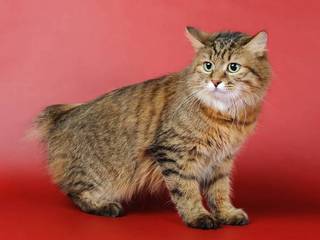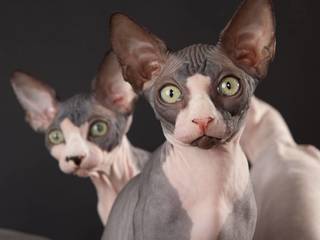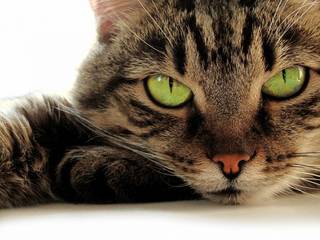Which Cats Are Hypoallergenic
In a world full of allergy causing particles, it can be difficult to determine what you should steer clear of, especially in the cat arena. The term hypoallergenic has been thrown around many times in the world.
You hear it with makeup products, skin care products, pets, etc. If you suffer from allergies or have recently found out that you are allergic to cats, you may be on the fence about bringing one into your home.
There may be a time that you decide to bring a cat into the family but you’re not sure the steps to take or if there may be cats that are less likely to trigger the issue. If you are on the hunt for more information about different cats and which ones may be suitable for you, look no further!
What Does Hypoallergenic Mean?
When someone uses the term “hypoallergenic” they are meaning that something is less likely to cause allergies or an allergic reaction. The definition of “hypo” when being used as a prefix means under, beneath, or less than normal.
Most animals produce what we call… dander, and they all shed in some form or fashion. This is the prime issue that typically causes allergies in humans that have or are around pets.
Certain breeds of animals will be considered hypoallergenic when they are less likely to shed, give off less dander, or have a certain type of coat.
What Causes Allergies to Cats?
According to WebMD, cats are more commonly known to cause allergies than dogs. The main culprit of these allergies stems from the urine, saliva, and dander that a cat excretes.
Dander, which is dried flakes of skin, has shown to be stronger on a cat than a dog. This fact alone makes them more susceptible to causing an allergic reaction.
Not only this, but a cat’s fur is likely to bring in pollen or other allergy-causing particles after they have been outside adventuring!
Are any Cats Hypoallergenic?
In short, there are no cats that are 100% hypoallergenic. But that goes with any animal and any product that claims to be. Some people are more prone to allergies or have a weaker immune system and no matter how “hypoallergenic” the pet is, they can likely have symptoms of allergies.
While, this is true, there are in fact some breeds that can be classified as more hypoallergenic than others.
Top 9 Cats That are Most Hypoallergenic
You want to buy a cat, but you have major allergy issues and you’re not sure which breed would be best for you. We have researched the most hypoallergenic cats and put together a list of 9 different types that are more likely to resonate with your lifestyle!
1. Sphynx / Hairless Cat
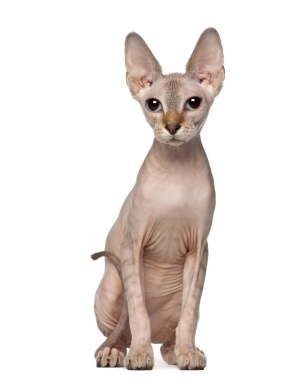
When you think of a sphinx your mind will automatically think of the “hairless” cat. Though they do not have hair like others, they still have a type of fuzz, and more so in certain areas.
This isn’t what typically causes an allergy flare-up in their owners. A Sphynx is considered hypoallergenic but not as much as you would think. They still give off dander and their skin secretes an oil. Keeping them bathed and groomed regularly can greatly decrease this issue.
2. Devon Rex
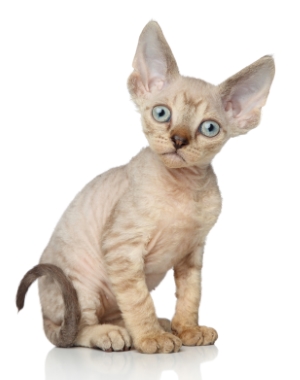
The Devon Rex’s wavy coat is known to shed less than others. This minimizes both dander and hair that would in turn cause allergies for their owner. This type of cat is highly recommended for people searching for a hypoallergenic cat.
They are very playful and will be by your side the majority of the time! This intelligent cat may be a great fit for you if you suffer from allergies.
3. Cornish Rex
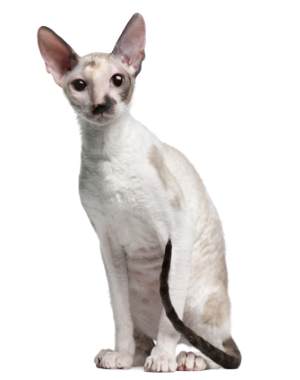
Like the Devon, the Cornish Rex tends to shed less than a typical cat. This means that the amount of dander that if left behind is also minimal. The Cornish Rex mainly only has an undercoat and does not have a top coat at all.
This undercoat is very fine and easy to maintain. The hair that they do have is pretty dense and normally is free of guard hairs. If you are looking for a loving cat that won’t cause allergy issues, this type of cat may be a great fit!
4. Balinese
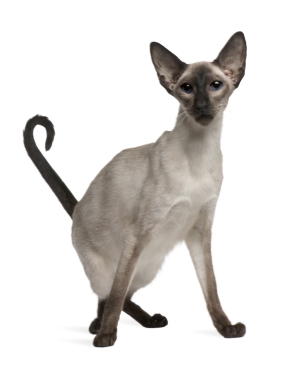
At first glance, you may be reluctant to choose the Balinese as a hypoallergenic cat. Don’t be fooled, they are on top of the list in this arena! Just like dogs, their long hair makes them less likely to shed or leave behind dander.
The Balinese are said to have less of a protein called Fel d 1. This type of protein is what most cats give off that in turn, causes allergies. They require minimal grooming and are easy to care for.
5. Oriental Short Hair
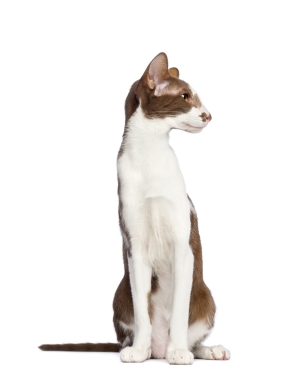
The Oriental Short hair is known to come with, you guessed it… short hair! But the name isn’t to be taken literally in all cases as some of these cats come with longer hair. Either way, short or long, the Oriental cat sheds less than you would expect.
They are a good choice for someone with allergies. With regular brushing and grooming, you are sure to combat any allergen-contributing qualities!
6. Siberian
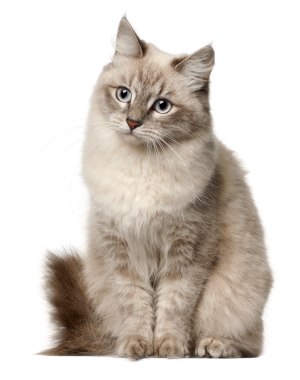
Siberian cats are another breed that is said to have less Fel d 1 protein that is secreted through their skin. These large cats have a triple coat which means that they have a lot of hair. Other than a seasonal shed, they still have a minimal shed rate which adds to the classification of being hypoallergenic.
During colder seasons when they aren’t shedding their winter coat, they should be brushed weekly. When the temperature warms up and they start the shedding process, it is best to brush them daily, maybe even multiple times per day.
7. Javanese
The Siamese-like cats known as Javanese are a cross breed between the Balinese and the Colorpoint short-haired cat. They are very athletic and have short hair. A Javanese cat is said to have no undercut which cuts down on the levels of shedding.
This breed is ranked as one of the lowest shedding cat breeds of all time. As with any other cat or animal, regular brushing and grooming can help maintain their coat and help be sure less shedding occurs.
8. Russian Blue
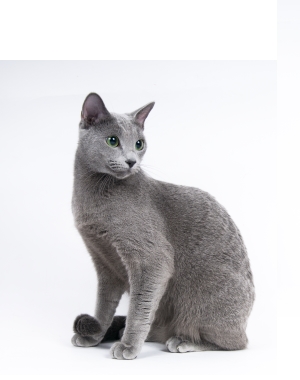
A Russian Blue cat appears to be a fluffball with puffy fur surrounding their face. They are a gentle and loving breed that likes to spend quality time with their owner. They do have a short and dense coat, but they are known to shed more than other typical hypoallergenic cats.
If you have a high tendency to be prone to allergies, this cat may not be the best choice for you.
9. Ocicat
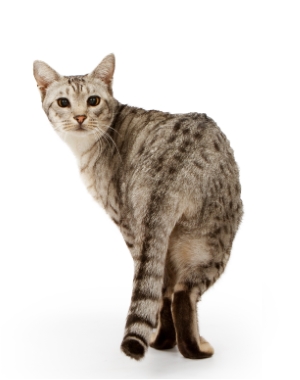
With this breed being so active it calls for reason to know how likely they are to cause an allergy flare-up. While the Ocicat does not rank the top breed for this, they are, however, still on the list.
They have a short coat and they’re known for minimal shedding. Using a brush or grooming mitt daily to remove the excess hair follicles will minimize the issue. The Ocicat will indeed be energetic and leave behind some loose hairs. They like attention and will want to be given plenty of affection.
10. Selkirk Rex
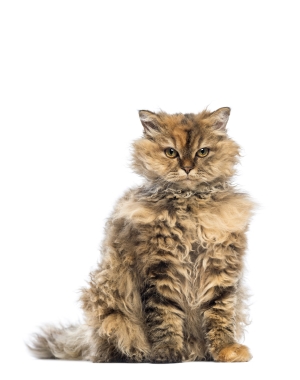
This fluffy and long-haired cat may take you by surprise. The Selkirk Rex seems like the type of cat to put you in an allergy-ridden state. However, that is not the case. This breed made the list of having a low shed rate.
They will need to be brushed weekly to keep the excessive fur in check but they will not bring on allergies as suspected.
Overall Brief
At the end of the day, you should remember that no cat is completely hypoallergenic. There are many different aspects that come into play when they are classified as so. As someone who suffers greatly from allergies especially from a pet standpoint, finding the lowest shedding and lowest grooming needs in a cat is a priority. The Javanese is the top choice while the Russian Blue is at the bottom of the list. The decision greatly depends upon how sensitive you are to allergens, your immune system, and how much time you have to put into grooming your cat.
Speaking to an allergist and getting their opinion can come in handy. If you decide to get a cat anyway, they may be able to offer solutions that ease the symptoms of allergies.
FAQ
What cat allergies symptoms?
ells, urine, and saliva. When an individual with cat allergies is exposed to these proteins, their immune system may overreact, causing various symptoms. Common symptoms of cat allergies include:
Sneezing,
Runny or stuffy nose,
Itchy, red, or watery eyes,
Nasal congestion,
Itchy nose, throat, or roof of the mouth,
Postnasal drip,
Cough,
Facial pressure or pain,
Swollen, blue-colored skin under the eyes (allergic shiners),
Skin rash, hives, or eczema,
Chest tightness, wheezing, or shortness of breath (in more severe cases)
Where do cat allergies come from?
Cat allergies occur when an individual's immune system overreacts to certain proteins found in a cat's skin cells, saliva, and urine. The immune system mistakenly identifies these proteins, called allergens, as harmful substances, leading to an allergic reaction. The exact reason why some people develop cat allergies and others do not is not fully understood. However, several factors may contribute to the development of cat allergies: Genetics: A family history of allergies, including cat allergies, can increase the likelihood of developing allergies. If your parents or siblings have allergies, you may be more prone to developing them as well. Environmental factors: Exposure to cats or other allergens at a young age may influence the development of allergies. Some studies suggest that early exposure to pets may help reduce the risk of developing pet allergies later in life, while others indicate that exposure to high levels of allergens may increase the risk. Hygiene hypothesis: This theory suggests that living in an overly clean environment during early childhood may contribute to the development of allergies by not providing the immune system with enough opportunities to build resistance to harmless substances. This lack of exposure may lead the immune system to overreact to allergens later in life. Other allergies or asthma: Having other allergies or asthma may increase the likelihood of developing cat allergies.
What helps cat allergies?
If you have cat allergies, there are several strategies to help manage your symptoms and reduce exposure to allergens. Here are some tips to help with cat allergies: Create an allergen-free zone: Designate a room in your home, preferably the bedroom, as a pet-free zone to reduce allergen exposure while sleeping. Use HEPA filters: Use high-efficiency particulate air (HEPA) filters in your home's air purifiers and vacuum cleaners to help trap and remove allergens from the air. Regular cleaning: Clean your home frequently, including dusting, vacuuming, and washing bedding, curtains, and other fabrics that can collect allergens. Bathe and groom your cat: Regularly bathing and grooming your cat can help reduce allergens on their fur. However, some cats may become stressed by frequent baths, so consult with a veterinarian for guidance on the best approach for your pet. Use allergy-reducing products: There are pet wipes and sprays designed to help reduce allergens on your cat's fur. Using these products as directed may help minimize allergen exposure. Wash your hands: After handling or petting your cat, wash your hands thoroughly with soap and water to remove allergens. Allergy medications: Over-the-counter and prescription medications, such as antihistamines, decongestants, and corticosteroids, can help relieve allergy symptoms. Consult with a healthcare professional for guidance on the most appropriate medications for your situation. Allergy shots (immunotherapy): Allergy shots involve regular injections of small amounts of allergens to help your immune system build tolerance. Over time, this treatment may reduce the severity of your allergic reactions. Consult with an allergist to determine if allergy shots are suitable for you. Limit carpeting and upholstered furniture: Carpets and upholstered furniture can harbor allergens. If possible, opt for hardwood or tile flooring and use furniture with smooth, easy-to-clean surfaces. Keep your cat outdoors: If your allergy symptoms are severe and other strategies are not effective, consider keeping your cat outdoors or finding a new home for them. This decision can be difficult, but it may be necessary for your health and well-being.


